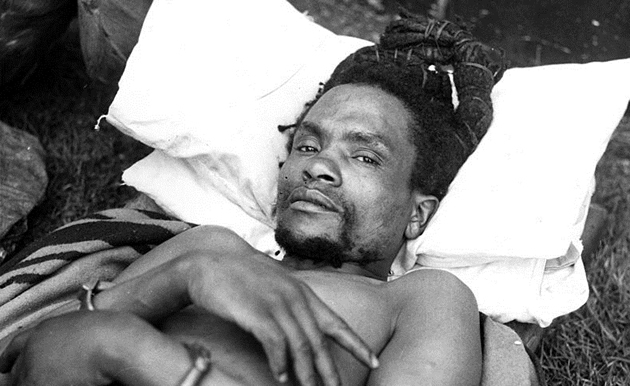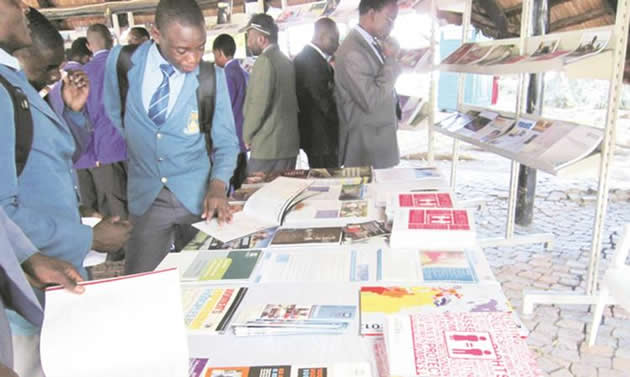Ideological import in ‘The Trial of Dedan Kimathi’

Elliot Ziwira @ The Book Store
Ideology, as posited by Cayne et al, is a body of ideas used in support of an economic, political or social theory; the way of thinking of a class, culture or individual.
Ideological conflicts are the bane of most African societies today whose roots can be traced back to colonialism. Ideologies of Pan-Africanism, Marxism and Negritude were the offspring of imperialism as Africans responded to their suffering and oppression.
As pointed out by Chinweizu et al, “the artist in the traditional African milieu spoke for, and on behalf of his community”. As such African writers like Chinua Achebe, Wole Soyinka, Charles Mungoshi, Ngugi wa Thiong’o, Dambudzo Marechera and Ayi Kwei Armah use their experiences to capture the ills affecting their societies.
The rationale of the artiste speaking for his community or society as embraced by Chinweizu et al (1985) obtains in Ngugi wa Thiong’o and Micere Mugo’s “The Trial of Dedan Kimathi” (1976). Ideologically, wa Thiong’o and Mugo are of the view that “good theatre is that which is on the side of the people. . . gives people courage and urges them to higher resolves in their struggle for total liberation”.
The playwrights purvey African experiences through the eyes of the Africans themselves whose ideological values and mores are shaped by their every day travails. Ideologically, Henderson’s “The Hunt of Dedan Kimathi” falls short in capturing the African experience or mood without bias as the writer is alien to the African culture which he purports to expound. Neither is Huxley’s “A Thing of Value” or “A Thing of Love” appropriate records of African experiences, nor is Ruark’s “Uhuru” ideologically appropriate in the African context.
“The Trial of Dedan Kimathi” explores the thorny ideologies of Negritude brought about by the brutalities of slavery, which the African society experienced first hand; Pan-Africanism and Marxism. The play also follows the three-part structure of drama posited by Alison (1986). This tripartite structure is exploited in three movements which capture the ideological conflict leading to slavery, exploitation evidenced in the plantations and subsequently the liberation struggle masterminded by Dedan Kimathi.
Wa Thiong’o and Mugo use realistic dialogue to express their disgust and bitterness at how the legitimate owners of the means of production have their cake usurped from their mouths by a minority gang of thieving aliens who feed on their gullibility and submissiveness. Ideological differences lead to the spirit of revolution epitomised by Kimathi wa Wachiuri. Kimathi, like Danlola in Soyinka’s “Kongi’s Harvest” (1974) embodies societal values and norms as he represents the suffering masses. However, unlike Danlola’s, Kimathi’s world is a real one and not a satirical one.
Wa Thiong’o and Mugo do not only look at the oppressive inclinations of humanity, but they take a step further into that ancient part of the human mind which is excited by trauma. Ideology remains a moot point on the African continent. As depicted in Soyinka’s “Kongi’s Harvest”, Africans will remain their own enemies if they do not clearly outline an all encompassing ideology devoid of not only colonial restrictions, but also circumvents trivial tribal differences.
Like the members of the Aweri Fraternity and the Carpenters’ Brigade in “Kongi’s Harvest”, the Second Soldier who is clearly hogwashed sees life through the lenses of the oppressor whom he considers superior as illustrated here: “You think the mzungu is a fool”, and, “It will be the end of this bloody struggle. Mzungu! Don’t play with him.”
If the oppressed remain psychologically embedded in the same apparatus that oppress them, then humanity is doomed because oppression, which is colour blind, will forever be ensconced in the downtrodden’s psyche as the cannibalistic fish preys on their gullibility.
Fortunately, as explored in “Kongi’s Harvest” and “The Trial of Dedan Kimathi”, the oppressive machinery is thwarted in its tracks as it fails to completely forestall the functioning of the oppressed as is the case in the Fifth Aweri and the First Soldier, respectively. The First Soldier clearly sees through the oppressor’s folly as he says: “The way Mzungu makes us thirsty to kill one another,” and “Kimathi is a hero to the people. They love him like anything, say what you will.”
The ideological conflict purveyed plays a pivotal role in shading light on how African experiences should be explored. The playwrights in “The Trial of Dedan Kimathi” do not only proffer solutions to the problems besetting their society as the mirror of its experiences, but they also offer a panacea to African aesthetics and drama which have been distorted by non-African or Eurocentric critics.
Since ideology can also be portrayed through music, the play also taps into the essence of musical allure in contrasting ideologies that shape up human existence. The celebration of the blackness of black is also explored through music.
In the first movement, music introduces the ideological conflict between black and white. The drums symbolise African “aggression and firm determination”, and the guns; another source of music, are metonymic of white supremacy, brutality and violence. This ideological tiff is illustrated thus: “Staccato burst of gunfire. The drums respond with a deafening, rhythmic intensity.”
As the oppressive machinery burst in fear inducing flames, the oppressed respond through the music of their determination.
Music which transcends ethnicity is used to foster unity, as in the end although Kimathi is sentenced to death for treason, instead of being silenced the suffering masses remain united in their pain. Spurred on by the embodiments of youth, vitality, love and life in the Boy and Girl, the oppressed masses break into song to celebrate the triumph of the voice of reason, the voice of the incarcerated; the voice of the crestfallen and wretched.
Notwithstanding their condition, the seeds of fruition and independence are evident in the toils of the oppressed.
Also used effectively in contrasting ideologies in the play is language. Language is used for dramatic effect and suspense in the dialogue between Johnie and Woman which conforms to the element of spectacle characteristic of drama.
Kimathi also uses brusque expressions, undisguised and uncamouflaged as the following may suggest: “By what right dare you, a colonial judge, sit in judgment over me?”
Such is the language of defiance, the language of resilience and bravado which prepares the way to Utopia for the hopeful masses.
Henderson on the other hand, because of his ideological affiliation, uses flattery in its numerous disguises.
On the flip side, however, although “The Trial of Dedan Kimathi” highlights the ideological conflicts inhering in Man in his quest to bare the dehumanising effects of imperialism and oppression from an African standpoint, the play’s glorification of armed resistance smacks of bias. The Mau Mau uprising which is glorified in the play and epitomised by Kimathi is known to have cost thousands of lives not only of their enemies but in their own ranks as well as loyalists.
Since ideology should be premised on an ethnicity free platform, the composition of the Mau Mau puts it in jeopardy as it caused ethnic divisions which are still bedeviling Kenya. The liberation fighters were mainly drawn from the Kikuyu ethnic group, which naturally makes unity of purpose problematic.
Because the element of time is of essence in drama, playwrights should be careful on the use of timeframes. In “The Trial of Dedan Kimathi” the use of flashbacks and a time span of more than 400 years stretches the concentration span of the audience.
Ideologically, however, the play remains a great fountain to those seeking an understanding of African traditions, values, norms, aspirations and experiences from an African vintage point because “the artist has always functioned as the recorder of mores and experiences of his society and as the voice of vision in his own time” (Soyinka, 1973:89).










Comments